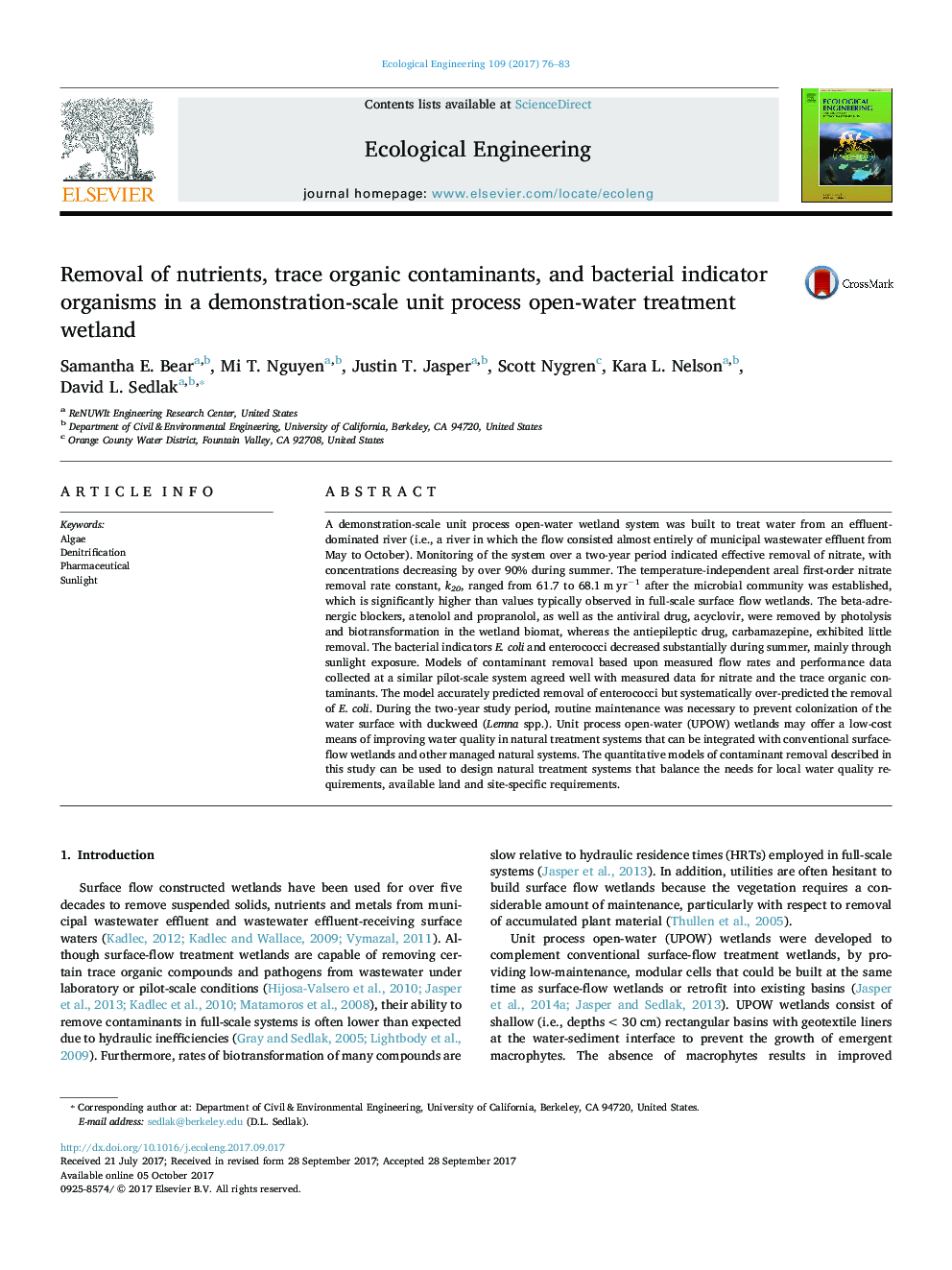| Article ID | Journal | Published Year | Pages | File Type |
|---|---|---|---|---|
| 5743646 | Ecological Engineering | 2017 | 8 Pages |
â¢Nitrate, readily degradable organics and microbial indicators were removed.â¢Removal increased as hydraulic residence times increased from 1 to 4 days.â¢For most contaminants, results agreed with models based on lab studies.
A demonstration-scale unit process open-water wetland system was built to treat water from an effluent-dominated river (i.e., a river in which the flow consisted almost entirely of municipal wastewater effluent from May to October). Monitoring of the system over a two-year period indicated effective removal of nitrate, with concentrations decreasing by over 90% during summer. The temperature-independent areal first-order nitrate removal rate constant, k20, ranged from 61.7 to 68.1 m yrâ1 after the microbial community was established, which is significantly higher than values typically observed in full-scale surface flow wetlands. The beta-adrenergic blockers, atenolol and propranolol, as well as the antiviral drug, acyclovir, were removed by photolysis and biotransformation in the wetland biomat, whereas the antiepileptic drug, carbamazepine, exhibited little removal. The bacterial indicators E. coli and enterococci decreased substantially during summer, mainly through sunlight exposure. Models of contaminant removal based upon measured flow rates and performance data collected at a similar pilot-scale system agreed well with measured data for nitrate and the trace organic contaminants. The model accurately predicted removal of enterococci but systematically over-predicted the removal of E. coli. During the two-year study period, routine maintenance was necessary to prevent colonization of the water surface with duckweed (Lemna spp.). Unit process open-water (UPOW) wetlands may offer a low-cost means of improving water quality in natural treatment systems that can be integrated with conventional surface-flow wetlands and other managed natural systems. The quantitative models of contaminant removal described in this study can be used to design natural treatment systems that balance the needs for local water quality requirements, available land and site-specific requirements.
Graphical abstractDownload high-res image (124KB)Download full-size image
